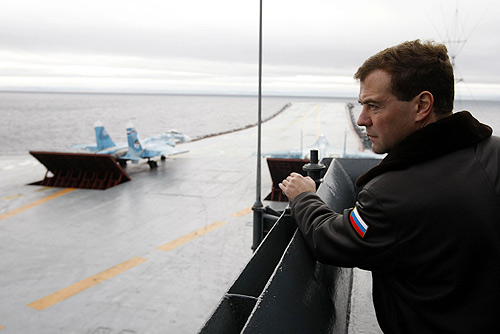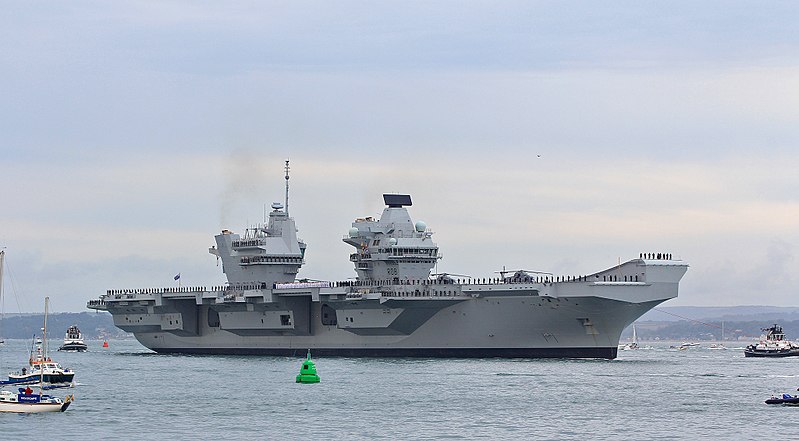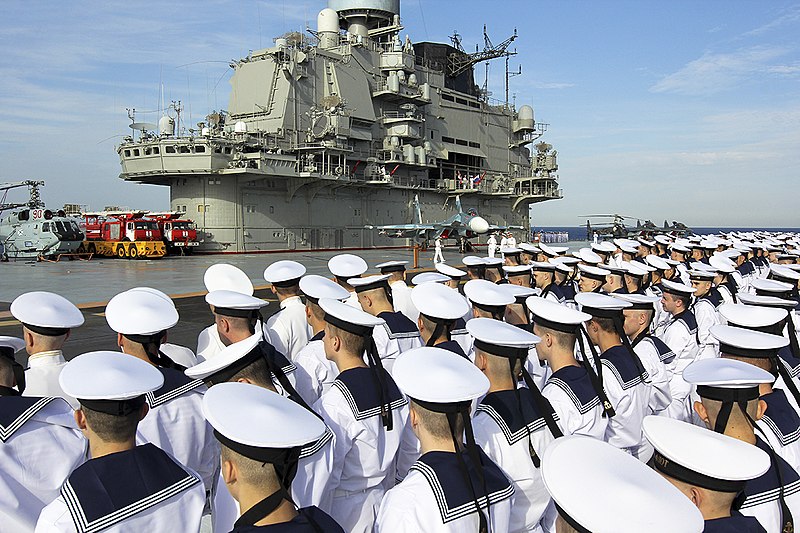
The saga of Russia’s sole aircraft carrier, the Admiral Kuznetsov, reads like a chronicle of misfortune and emblematic of the larger narrative of Russia’s elusive ambitions to project naval air power. The Kuznetsov, a ship with a storied past riddled with mechanical failures and accidents, has been notably absent from the ongoing conflict in Ukraine, side-lined by persistent maintenance issues.

From its inception, the Kuznetsov was intended to signal the Soviet naval presence, commissioned in the mid-1980s to protect the USSR’s submarines and other warships.

Today, it stands as a symbol of thwarted aspirations and outdated capabilities. “Russia’s sole aircraft carrier is widely considered to be a massive failure,” an article reports, detailing its chronicle of mechanical and operational woes.

The carrier’s slew of incidents includes tragic accidents that have resulted in deaths and injuries, among them fires, a floating crane crash, and the mishandling of its fuel source, mazut, which emits conspicuous black smoke, betraying its position at sea.

Russian state-run media have tentatively slated the carrier for a return following sea trials in 2024, though the crippling economic sanctions and production woes cast a long shadow of doubt over this timeline.

Despite efforts to modernize the fleet, Russia’s challenges in naval aviation persist. Historical accounts demonstrate that these struggles are deeply rooted in Soviet history.

The Soviet Union itself never managed to field a true aircraft carrier throughout its existence, with successive leaderships often prioritizing land and nuclear capabilities over maritime air power.

Initiatives like Project 71 and Project 72 during the Stalin era, and later the ambitious but ultimately scrapped supercarrier Ulyanovsk, paint a picture of a nation forever chasing a dream on the high seas.

Strategic, economic, and political considerations consistently pushed aircraft carriers to the sidelines, leaving a void in the Soviet, and now Russian, naval strategy.

The current state of the Kuznetsov, with its outdated technology and operational inefficiencies, is a lingering reminder of this long-standing paradox.

As one article encapsulates it, “The Soviet Union’s Elusive Dream: The Quest for a True Aircraft Carrier,” portrays a narrative of ambitious plans perpetually interrupted or deprioritized.

Today’s Russia faces a similar quandary, with the Kremlin’s attempts to develop two Ivan Rogov-class amphibious assault ships potentially functioning as light aircraft carriers for the Russian Air Force hampered by sanctions and industrial challenges. The possibility of these ships coming to fruition anytime soon remains dim, as Moscow is “forced to rely on its essential defunct Kuznetsov carrier.”

The Kuznetsov’s saga, then, is more than just a tale of one ship’s troubles; it is reflective of the broader story of Russia’s naval ambitions and constraints. It is a story of great power aspirations restrained by harsh realities, a narrative that continues to define Russia’s naval capabilities and its place in the geopolitical landscape.

As Russia grapples with the state of its military equipment in the conflict with Ukraine, the story of the Kuznetsov serves as a poignant reminder of the past and a cautious marker for the future.

Relevant articles:
– Russia’s Admiral Kuznetsov Aircraft Carrier Nightmare Is Here To Stay, The National Interest
– Russia’s Aircraft Carrier Nightmare Just Won’t Seem to End, The National Interest
